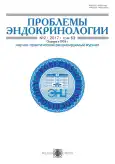Comparative studies of milk removal in lactating women using the Lactopuls breast pump with vacuum and compressive components and the Medela Symphony breast pump
- Authors: Alekseev N.P.1, Iliyn V.I.1, Talalayeva N.E.2
-
Affiliations:
- Saint Petersburg State University
- The Research Institute of Obstetrics, Gynecology, and Reproductology named after D.O. Ott
- Issue: Vol 68, No 5 (2019)
- Pages: 5-10
- Section: Original study articles
- URL: https://bakhtiniada.ru/jowd/article/view/15638
- DOI: https://doi.org/10.17816/JOWD6855-10
- ID: 15638
Cite item
Full Text
Abstract
Hypothesis/aims of study. To date, in the world, including in the Russian Federation, the number of women who use breast pumps (BPs) in the process of breastfeeding has significantly increased. Many mothers of premature and full-term babies are partially or completely breast pump-dependent for weeks or months and need a BP that should be effective and convenient. In this regard, it is of great practical interest to compare the characteristics and, above all, the efficiency of milk pumping using two types of BP — one with vacuum component and another with vacuum and compressive components. The aim of this study was to conduct a comparative assessment of the efficiency of milk removal using the Medela Symphony BP and the Lactopuls BP.
Study design, materials and methods. 14 lactating women of 19–38 years of age who volunteered to be included in this study were examined. Women had been lactating and breastfeeding normally for 5–8 days. The Lactopuls BP with vacuum and compressive components and the Medela Symphony breast pump with a vacuum component were used in the main program mode.
Results and conclusion. It was found that the Lactopuls BP is more effective for milk removal. In particular, the amount of milk expressed using it was on average 14% more than that using the Medela Symphony BP. The Laktopuls BP with vacuum and compression components has shown its higher efficacy compared to the vacuum Medela Symphony BP.
Keywords
Full Text
##article.viewOnOriginalSite##About the authors
Nikolay P. Alekseev
Saint Petersburg State University
Author for correspondence.
Email: ultra3@yandex.ru
ORCID iD: 0000-0002-9807-5021
PhD, DSci (Biology), Professor. The Department of General Physiology, the Faculty of Biology
Russian Federation, Saint PetersburgVladimir I. Iliyn
Saint Petersburg State University
Email: victor.iljin@mail.ru
PhD, Research Engineer. The Department of General Physiology, the Faculty of Biology
Russian Federation, Saint PetersburgNadezhda E. Talalayeva
The Research Institute of Obstetrics, Gynecology, and Reproductology named after D.O. Ott
Email: n.tal@yandex.ru
MD, PhD. The Department of Pregnancy Pathology III
Russian Federation, Saint PetersburgReferences
- Meier PP, Patel AL, Hoban R, Engstrom JL. Which breast pump for which mother: an evidence-based approach to individualizing breast pump technology. J Perinatol. 2016;36(7):493-499. https://doi.org/10.1038/jp.2016.14.
- Alekseev NP, Ilyin VI. The mechanics of breast pumping: compression stimuli increased milk ejection. Breastfeed Med. 2016;11:370-375. https://doi.org/10.1089/bfm.2015.0172.
- Ardran GM, Kemp FH, Lind J. A cineradiographic study of breast feeding. Br J Radiol. 1958;31(363):156-162. https://doi.org/10.1259/0007-1285-31-363-156.
- Mizuno K, Ueda A. Development of sucking behavior in infants with Down’s syndrome. Acta Paediatr. 2001;90(12):1384-1388. https://doi.org/10.1080/08035250152708761.
- Niikawa T, Hagino C, Nishi E, et al. Measurement of tongue-artificial nipple contact pressure during infant sucking. IEEJ Transactions on Electrical and Electronic Engineering. 2012;7(2):190-196. https://doi.org/10.1002/tee.21715.
- Elad D, Kozlovsky P, Blum O, et al. Biomechanics of milk extraction during breast-feeding. Proc Natl Acad Sci U S A. 2014;111(14):5230-5235. https://doi.org/10.1073/pnas. 1319798111.
- Burton P, Deng J, McDonald D, Fewtrell MS. Real-time 3D ultrasound imaging of infant tongue movements during breast-feeding. Early Hum Dev. 2013;89(9):635-641. https://doi.org/10.1016/j.earlhumdev.2013.04.009.
- Miller MR, Kasahara M. The cutaneous innervation of the human female breast. Anat Rec. 1959;135:153-167. https://doi.org/10.1002/ar.1091350302.
- Алексеев Н.П. Физиология лактации женщины. – М.: Юрайт, 2019. – 300 с. [Alekseev NP. Physiology lactation of the woman. Moscow: Urait; 2019. 300 р. (In Russ.)]
- Johansson RS, Vallbo AB. Tactile sensory coding in the glabrous skin of the human hand. Trend Neusci. 1983;(6):27-32. https://doi.org/10.1016/0166-2236(83)90011-5.
- Alekseev NP, Ilyin VI, Yaroslavski VK, et al. Compression stimuli increase the efficacy of breast pump function. Eur J Obstet Gynecol Reprod Biol. 1998;77(2):131-139. https://doi.org/10.1016/s0301-2115(97)00269-8.
- Patent USA No WO/2003/082378. Greter A, Larsson M. Suction sequences for a breastpump. World Intellectual Property Organization; 2003. Available from: https://patentscope.wipo.int/search/en/detail.jsf?docId=WO2003082378.
- Meier PP, Engstrom JL, Hurst NM, et al. A comparison of the efficiency, efficacy, comfort, and convenience of two hospital-grade electric breast pumps for mothers of very low birthweight infants. Breastfeed Med. 2008;3(3):141-150. https://doi.org/10.1089/bfm.2007.0021.
- Ueda T, Yokoyama Y, Irahara M, Aono T. Influence of psychological stress on suckling-induced pulsatile oxytocin release. Obstet Gynecol. 1994;84(2):259-262.
Supplementary files








